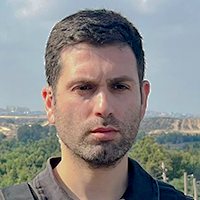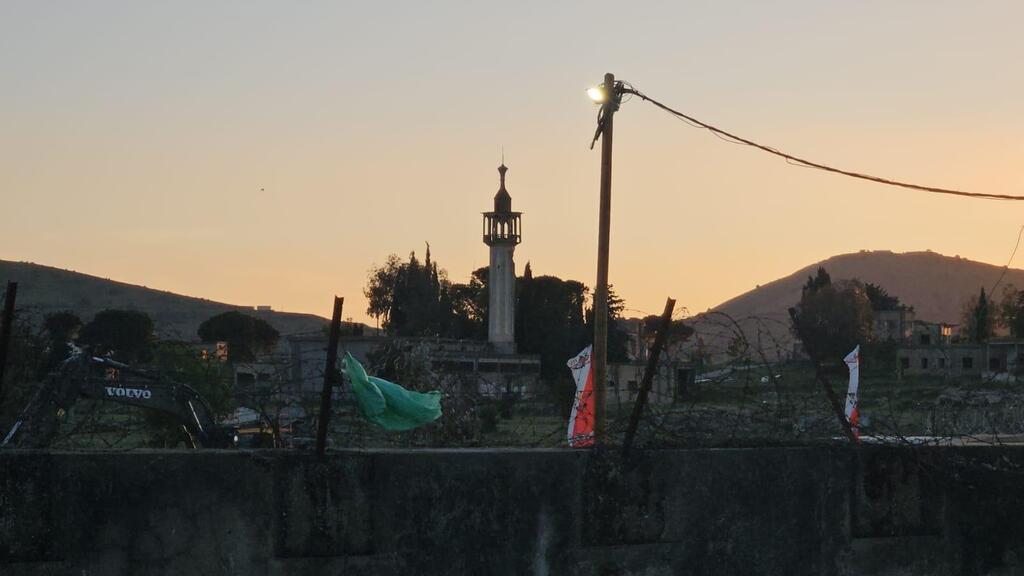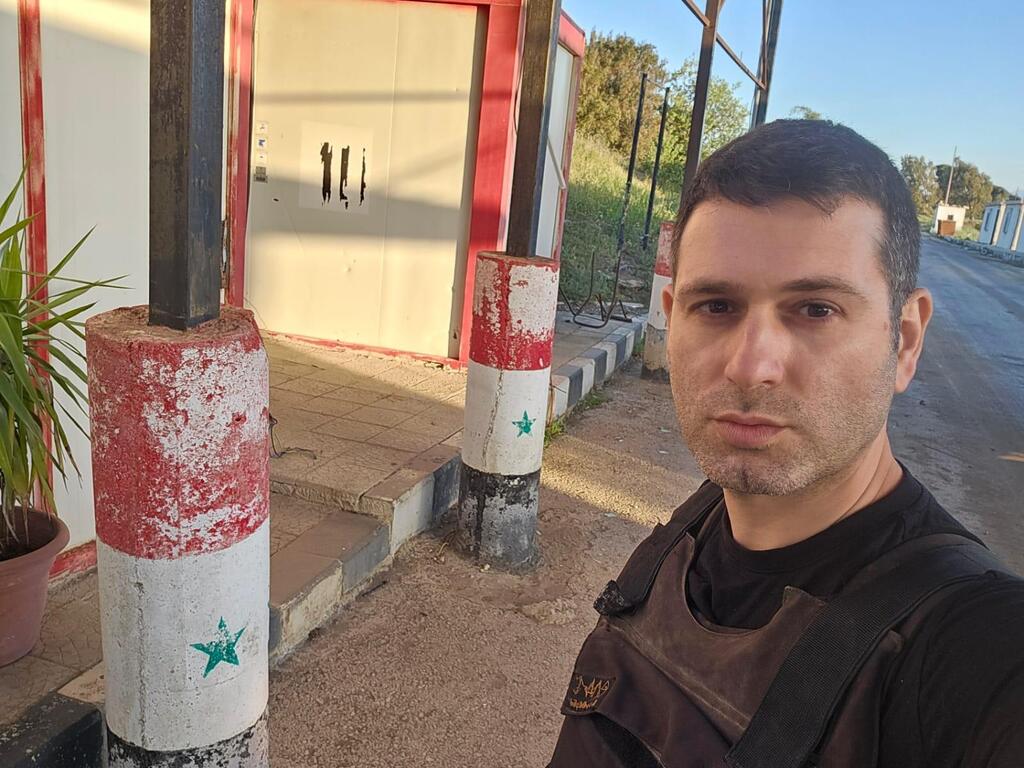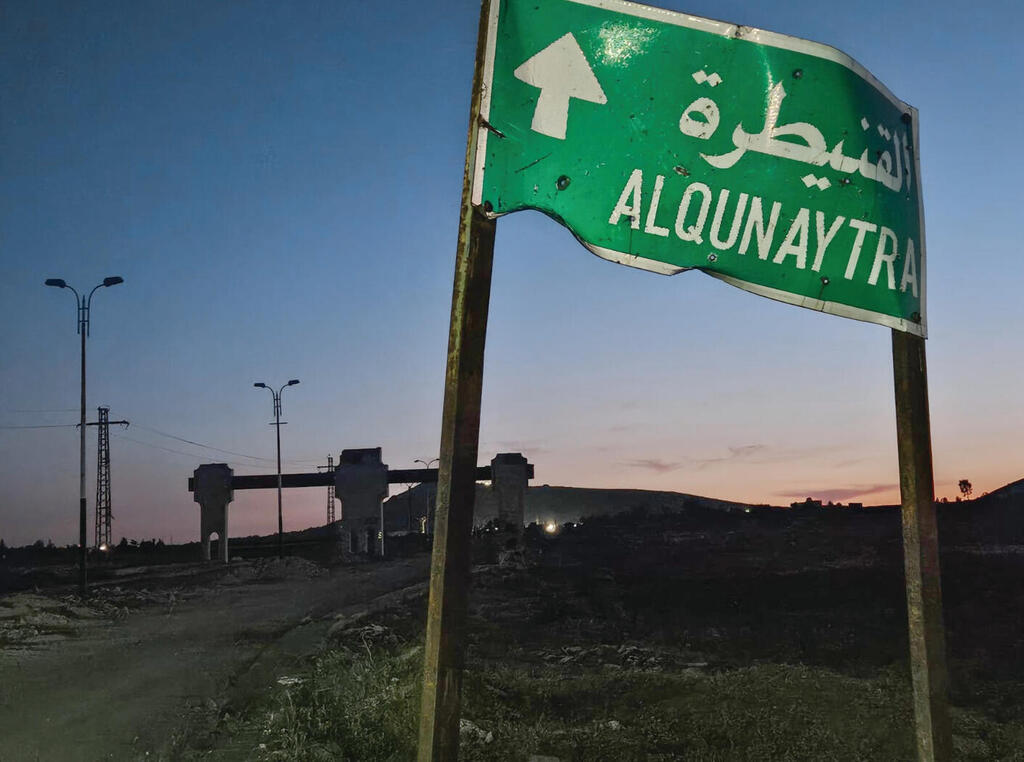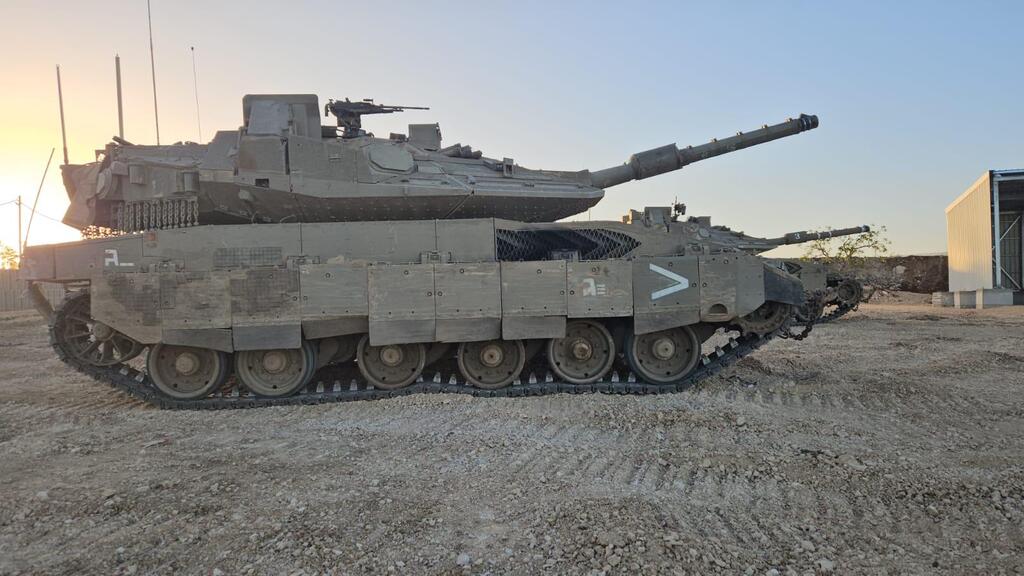A 202nd Paratroopers Battalion soldier opens the yellow Israeli gate at the Quneitra Crossing — the only official passage between Israel and Syria — located in the northern Golan Heights. He’s not wearing a helmet, in line with the relatively low threat level in the area. A few feet ahead, his fellow soldier presses a switch to open the second, inner gray gate, facing east.
Just 50 miles from this point, Israeli Air Force helicopters recently delivered aid to Druze communities in Suweida. More than 20 wounded Syrian Druze have already crossed through this border fence for treatment in Israel. There’s no trace here of the massacres being carried out against Druze by jihadist forces only dozens of miles away — and for now, no sound of gunfire has reached this stretch.
The fall of the Assad regime, a Syrian flag still flew from a tall pole atop the border outpost. The faded colors of Syria’s flag still mark the checkpoint pillars. Inside the abandoned living quarters of Syrian border troops, torn remnants of a large portrait of former president Hafez Assad remain — a stark reminder of the man who initiated the ceasefire with Israel in 1974. That reality has since unraveled under the rule of his son, Bashar.
Six months after the Syrian Golan was retaken without a fight, the IDF now operates with triple the number of routine security battalions on both sides of the Golan border. After several months of stabilization and relative quiet, two new developments have emerged in the Syrian sector.
In the northern part of the Syrian Golan, about 15 miles from the border, Israel is permitting the new leadership under Ahmad al-Sharaa to deploy local policing forces to maintain law and order in villages such as Khan Arnabah, Jubata al-Khashab and New Quneitra. The security situation in these areas is stable, allowing Israeli troops to move safely through village streets en route to nine new IDF posts established on Syrian territory.
By contrast, the southern Golan tells a different story. Villages along the road to Daraa province are populated by more religious Sunni residents who, during the civil war, welcomed Jabhat al-Nusra terrorists. From these villages, the group launched roadside bombings — including against Israeli soldiers. Unlike in the center and north, no one here is volunteering to hand over weapons to Israeli troops, as has quietly happened elsewhere.
Last month, during a routine patrol in the Syrian town of Neveh, 80th Battalion paratroopers came under heavy fire from gunmen using heavy machine guns, shooting from residential balconies. The soldiers quickly returned fire, took cover and escaped unharmed.
“We immediately deployed drone fire from Hermes 450 drones and eliminated seven terrorists who threatened our troops,” a senior commander in the area said. “But we could have killed a hundred under the rules of engagement. We chose not to go there.”
A growing security concern for the IDF is the second, more eastern ridge of volcanic hills leading toward Damascus — an area the Northern Command has so far opted not to seize. Unidentified figures occasionally approach the abandoned Syrian military posts on these ridges, located 15 miles from the Israeli border, and are driven off by long-range IDF fire. Despite feelers from Damascus, the IDF has not allowed al-Sharaa’s forces to reach the area.
“Al-Sharaa’s regime is still trying to consolidate its control and does not effectively govern large parts of Syria,” a senior IDF officer explained. “He lacks control over the Alawite coastal region loyal to Assad, the northern zones where the Turks and Kurds dominate, and the southeast, which is under Bedouin tribal influence. We're doubtful that the southwestern corner bordering Israel is a current priority for him.”
Senior General Staff officials have recently spoken with Western diplomats who visited Damascus to assess the actual control wielded by Hayat Tahrir al-Sham (HTS), al-Sharaa’s organization. “You enter the Defense Ministry or Foreign Ministry, and you see 50 offices completely empty, with only three or four rooms staffed by our hosts,” European counterparts reportedly told the IDF, describing the regime’s limited grip on the country.
The IDF estimates al-Sharaa’s armed force numbers around 60,000 fighters, though lightly armed and operating primarily via pickup trucks.
Following Iran’s withdrawal from most of Syria — including from the Golan Heights, to Israel’s relief — Russia continues to maintain a military presence, particularly along the Assad-aligned coastal zone and in the northeastern city of Qamishli.
Israeli defense officials have recently met with their Turkish counterparts to establish a coordination mechanism for both militaries operating in Syria. The IDF believes Turkey is eager to help build a formal army for al-Sharaa, especially after the IDF destroyed much of the Assad regime’s vast weapons stockpiles. However, Ankara reportedly remains hesitant due to the financial burden.
Last month, IDF officers held a rare meeting with around 60 Druze sheikhs from both Israel and Syria in an effort to strengthen ties with the community across the border — not only with residents of the Syrian-Druze village of Hader, across from Majdal Shams.
A proposal to allow Syrian, primarily Druze, laborers to work in the Israeli Golan was recently halted by the political echelon, reportedly due to bureaucratic and insurance concerns.
The process of achieving a localized normalization with Syria — at least in the Golan Heights — is advancing slowly. The quieter the Syrian side becomes, the more secure IDF soldiers feel. Most troop movement is still in vehicles, but no longer in tightly coordinated pairs or trios, and in many areas soldiers don’t feel the need to wear helmets.
The main concern in the sector is the sudden arrival of dozens of pickup trucks from deeper inside Syria via the Quneitra–Damascus highway, which runs directly to the Israeli Golan. “The distance from Quneitra to Kibbutz Ein Zivan, at high speed, is about five airborne minutes,” explained Lt. Col. G., the operations officer of the Golan Division.
Standing atop the old Quneitra police station — a Soviet-style building with barred detention cells that evoke the dark legacy of torture and incarceration until just a year ago — one sees how much the IDF has invested.
Get the Ynetnews app on your smartphone: Google Play: https://bit.ly/4eJ37pE | Apple App Store: https://bit.ly/3ZL7iNv
Paratroopers once slept in this building, but now they and other units are housed in new, relatively comfortable bases the IDF has built, with permanent infrastructure, bathrooms, showers and fortified barracks. Meals are delivered from bases on the Israeli side of the border.
The massive engineering barrier project that the IDF is constructing here is also progressing, albeit slowly. Giant trenches and towering embankments are being built to delay any future ground invasion into the Golan. So far, about 20% of the ambitious 55-mile border project with Syria has been completed.
On the road to an IDF post near the village of Kahtania, three Syrian children smile peacefully at passing soldiers. One already wears a shirt bearing the symbols of “New Syria” and a portrait of al-Sharaa. Another boy seen earlier wore a shirt featuring Abdel al-Sharout, a Syrian soccer star who supported the anti-Assad revolution and was killed in clashes with the regime.
Soldiers here, including from the storied 77th Armored Battalion, stay alert — though they are keenly aware that their counterparts in Gaza may be in far greater need right now.
At another IDF post flying the red flags of the Paratroopers Brigade, three shiny, high-powered motorcycles are parked near the gate. The guard at the checkpoint says his fellow soldiers had confiscated them from Syrian youths who came too close to IDF positions — possibly to gather intelligence on troop movements.
Military intelligence in the sector is still described as limited, with only one or two arrests per month. “It’s true that some of the combat routines here resemble those in the West Bank — surprise checkpoints, patrols and reconnaissance,” said Lt. Col. G. “But if we receive a targeted warning or specific intel about a hostile element, we strike or detain immediately. No hesitation.”



